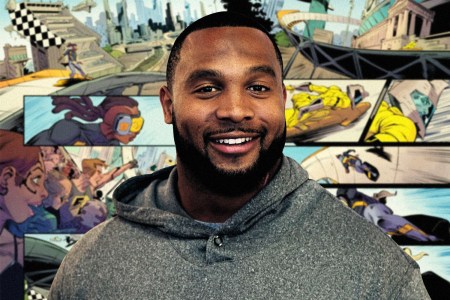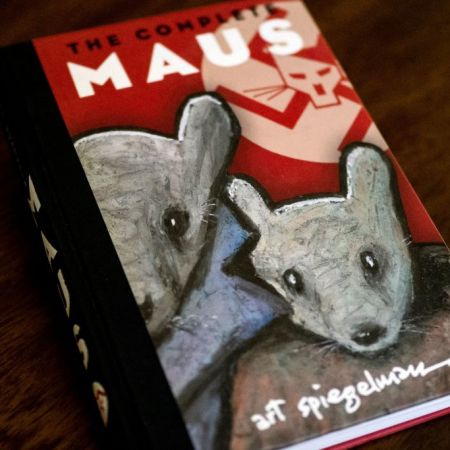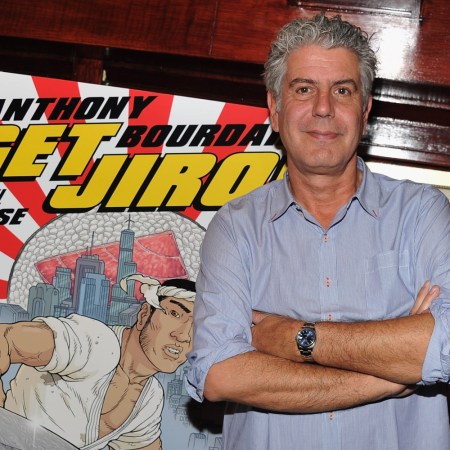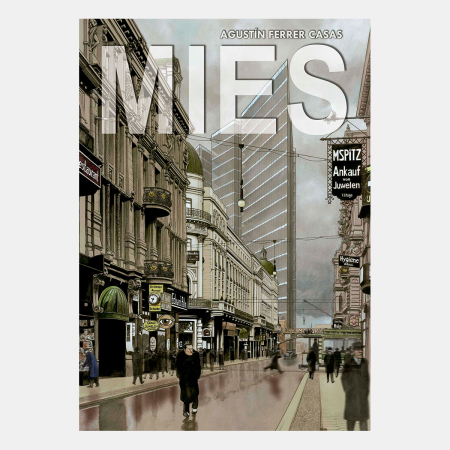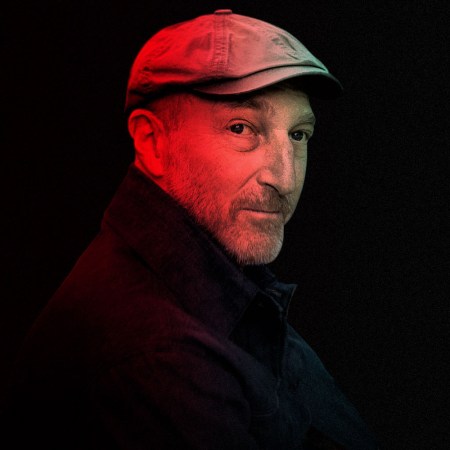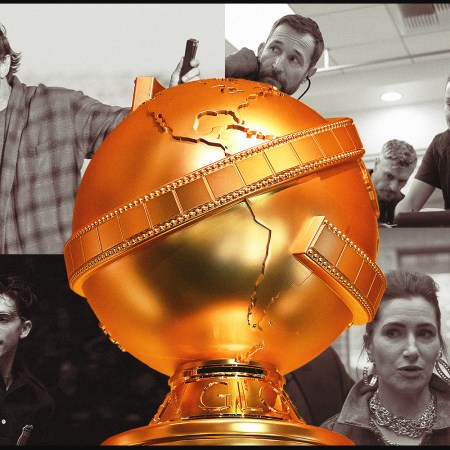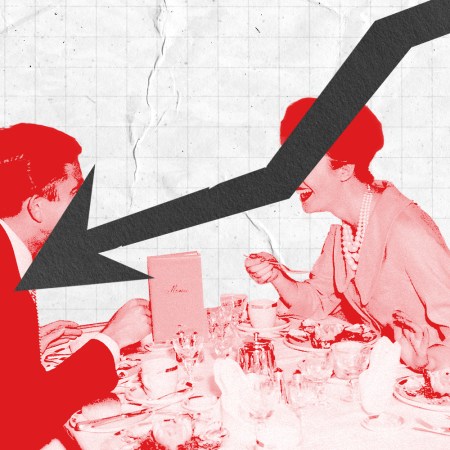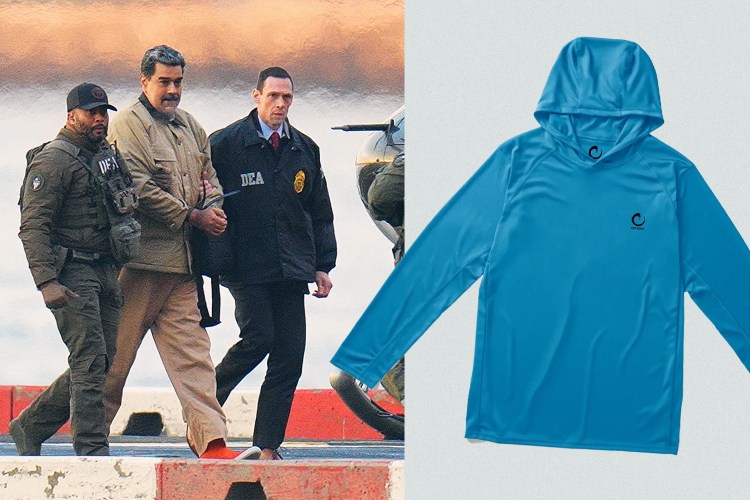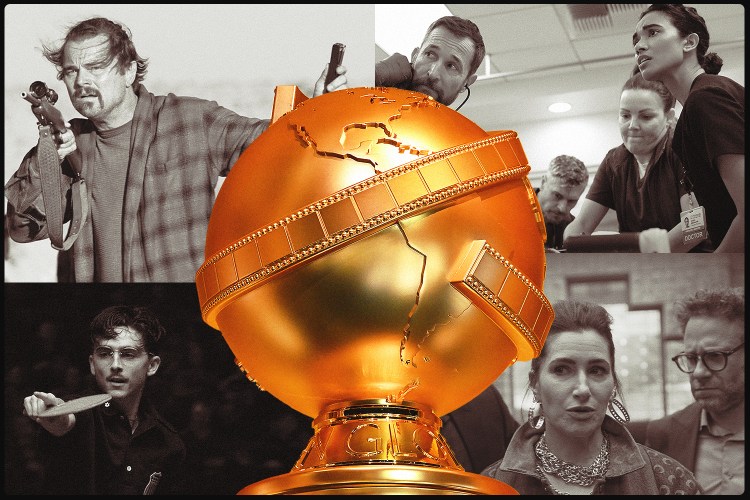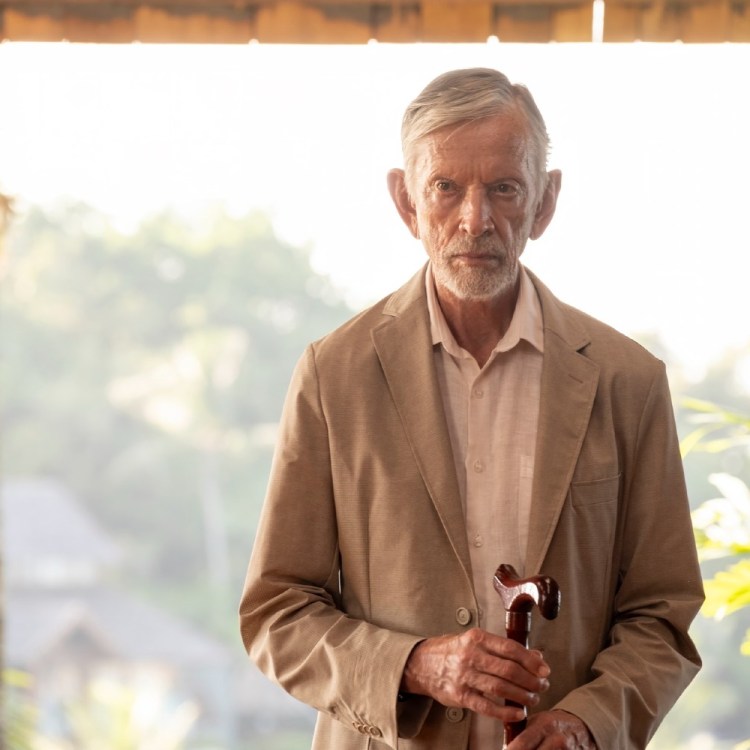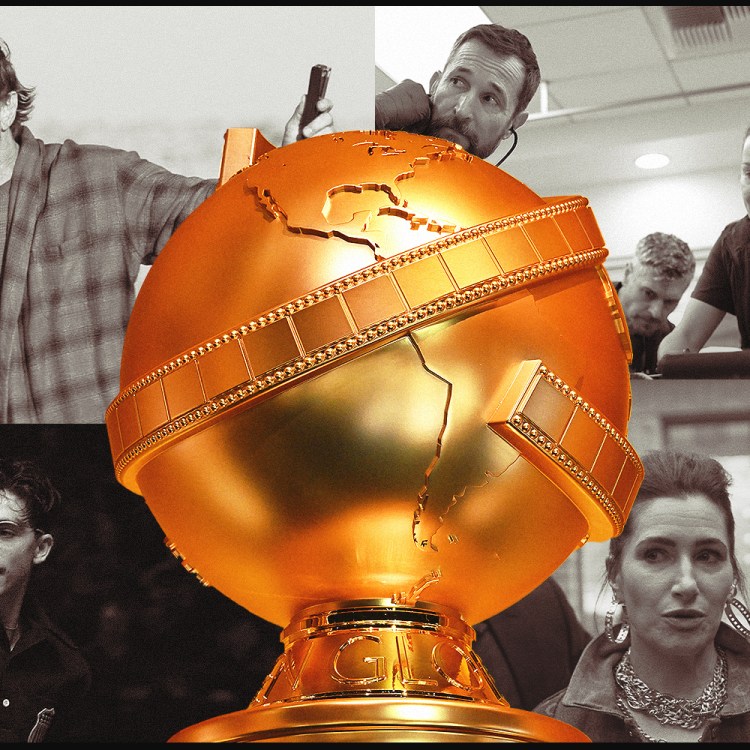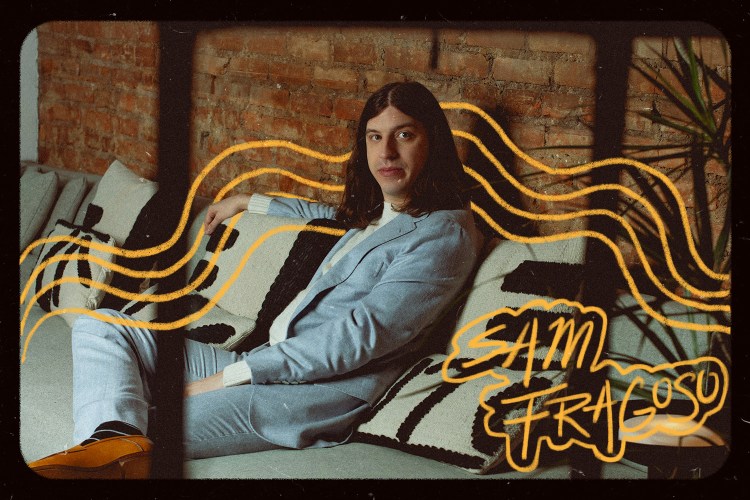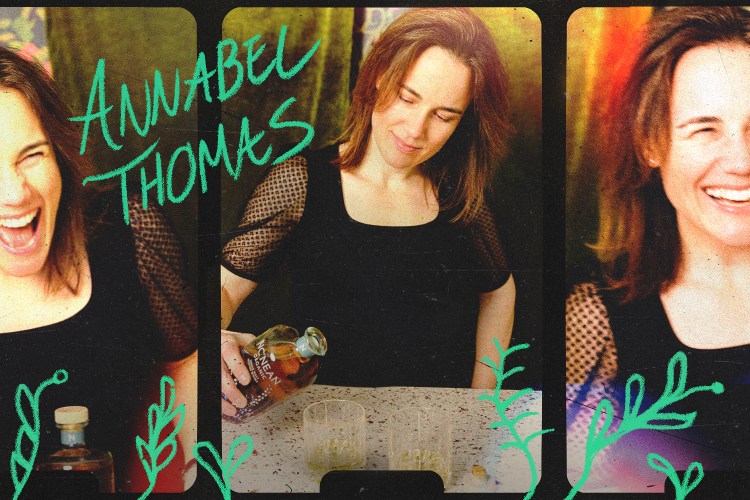When writers Brian DeCubellis and K.S. Bruce began working on their followup to the film Trust, it wasn’t long after the pandemic began devastating New York City. What began as a screenplay then took a leap into another medium, with writer Ethan Sacks — whose work includes Star Wars: Bounty Hunters, A Haunted Girl and the nonfiction Covid Chronicles — adapting their screenplay as a comic book.
The resulting collaboration is Dark Honor, a five-issue miniseries debuting this week from Image Comics and Syzygy Publishing; Fico Ossio, David Messina, Gabriel Guzman and Jamal Igle handled the art for the project. It’s about an ambitious man looking to take advantage of the pandemic to gain control over New York’s criminal underworld and the woman tasked with stopping him.
Brian DeCubellis and Ethan Sacks spoke to InsideHook about how Dark Honor came together, the challenges of revisiting a particular moment in New York City’s history and the logistics of balancing storytelling across different forms of media.
InsideHook: You’d just finished shooting the film Trust when the pandemic effectively shut down New York City. At what point did you think that this particular point in time would be an interesting backdrop for a crime story?
Brian DeCubellis: It was in that spring, when things were really scary, if you recall. It was so unknown. It was life-threatening. Before there was a vaccine and before we understood what it was, that it was this terrifying force out there that you were afraid to go out into. I mean, we were in lockdown, for a reason. That combined with the empty streets of Manhattan made for a very surreal and cinematic world.
Dark Honor combines the pandemic with the concept of a secret organization protecting different crime families within New York, complicated by an outside force looking to take over. When did that additional element come into play?
BD: I think it all kind of came together a little bit naturally. K.S. Bruce — who’s the co-creator of the comic and the co-writer of the original screenplay — and I, when we were thinking of doing this as a movie, we had been looking at some noir from the ’60s, mostly European noir, and loving how the atmosphere in those movies plays such a big role in the story. In other words, the vibe of the piece is as much a part of the story as the plot points are.
1960s noir like giallo films, or something else?
BD: Jean-Pierre Melville films like Le Doulos, Le Samourai and Army of Shadows. Then Pale Flower from Japan or 1958’s Elevator To The Gallows, Louis Malle’s first narrative feature.
Since this was all coming together story-wise during the early days of the pandemic, when we thought about having that be the atmosphere, then it started to click into place. I think it was K.S. who came up with the idea of the villain being the metaphor for COVID in that he was coming to take over the city. And when that clicked into place, it all just kind of made sense to us.
We wanted to be very respectful, obviously, because we’re talking about a real-life pandemic in which hundreds of thousands of people were dying in real time. We didn’t want to be at all disrespectful or not aware of that, within the story of the world. But we were more interested in the backdrop to preserve that time period as a little time capsule. Because I think it gets forgotten in a weird way.
When we started, we also didn’t know the pandemic was going to go as long as it did. We thought we were capturing a briefer moment in time. But it takes a little while to write a screenplay. As we kept writing, the pandemic was not going away, really. That’s why when we completed the screenplay, we just put it on the shelf, because it didn’t feel right to turn this into a fiction movie. It wasn’t until years later that the idea came up to do it as a comic book, which felt more appropriate to the story. And now we’re at the five-year anniversary, so there’s a little bit of distance from it. That all made more sense to us.
How did Ethan Sacks come into the picture to adapt the screenplay for a new medium?
BD: K.S. Bruce was someone I had worked with on the first movie, Manhattan Night, starring Adrien Brody. Ethan Sacks was at the Daily News at that time, and did a piece about the movie and about Adrien playing a reporter. We struck up a professional friendship at that time and stayed in touch. And I was very excited when Ethan started to make the jump from newspapers to comic books.
It was in conversations among the three of us, because we had stayed in touch, that this idea came up. K.S. and I didn’t know the first thing about how to make a comic book. So the question went to Ethan, “How do we do this? Would you like to help us? Would you like to join the team?” And the answer was, “Yes, yes, yes.”
We sent him the screenplay, and we asked, “Give us an honest opinion: does this make a good comic book?” And he read it and said, “Absolutely.” He was hooked. So not only did Ethan come on as a writer to adapt the screenplay and work with us on writing the comic, but he also was a guide for us to navigate this new world.
When Ethan sent it to Chris Ryall at Syzygy, who he had just done A Haunted Girl with — a comic that he and his daughter Naomi wrote and Syzygy published through Image Comics — that was the easy connecting of the dots. In other words, if Chris didn’t want to do it, I think it would have been a longer journey, probably, to doing it. But since Chris was immediately interested, it all fell into place.
As a reader, were there any comics that you were looking at as a touchstone for how you wanted this to read? There were parts of this book that reminded me of 100 Bullets, personally — which is always a good thing as crime comics are concerned.
BD: I couldn’t cite that as a reference. I am not as well-versed as Ethan would be. My big comic book awakening was Frank Miller’s The Dark Knight Returns from the late 1980s. When I saw that, I couldn’t believe that’s what a comic could be like. It blew my mind.
I was a Batman fan from when I was a kid. I got hooked on the reruns of the Adam West series as a little kid, and I love Batman. So to see the Dark Knight version, it kind of struck me in my soul, because it was such a new and vivid rendering of this character that you loved and in a way that was scary.
Later in life, I have grown to love film noir. And so those two things connected as reference points. But I’m not super well-versed in all the stuff in the comic world. I’m just not that familiar. So it’s really an outsider’s perspective coming in.
The protagonist of Dark Honor, who is in prison as the series opens, is a compulsive gambler — which is also something that seems increasingly topical in 2025. Was that also something on your mind as you were writing this?
I wouldn’t say that we were necessarily looking to follow that trend, although you’re 100 percent right.
I think that is more of a topical issue now. I think when we started writing it in 2020, it wasn’t necessarily that. But the fact that she’s a badass female ex-con with a gambling problem felt right for the protagonist this time, you know?
If there’s enough interest in the comic book Dark Honor, could you see the screenplay eventually being adapted for another medium?
BD: Absolutely. We’re very curious to see the reaction. If there is even a cult following, that would be a good indicator to pick the screenplay version back up, and look at that as a big budget live-action movie. The beauty of it is when you have the whole story told across the five issues and then ultimately a trade paperback, you can see the movie in the pictures. It’s storyboarded in color and beautifully drawn. We’ll re-evaluate it then, but it’s not lost on us that this could become a movie after being a comic book.
Ethan, what was it like for you to work from an existing story told in a different medium and translate that to comics? What was your process for that like?
Ethan Sacks: I often work with licensed properties — Star Wars being the main one. The great news for me was this particular script, the premise won me over. In terms of the adaptation, the biggest challenge was to turn it from a movie into something that was more like a miniseries, a prestige HBO miniseries, as opposed to a feature film.
You have to serialize it a little bit. It’s really a pacing thing more than anything else. But the story itself was bulletproof. It had a beginning, middle and ending that were really good. Compelling characters and action sequences that were amazing. So I didn’t really have any work to do at all except for the pacing to make it fit into five issues.
At every step of the way, I was working with K.S. and Brian; I would show them what I was doing. It really was collaborative the whole way through. It wasn’t just me taking it like a baton and doing my own thing. And they were very open if I had suggestions to deviate slightly here and there for the comic book format.
As an example, I had to cut dialogue because you don’t want to wallpaper a scene and hide the art. It’s almost like haiku. So there were some small cuts here and there. But it really was pretty close to the script.
Former All-Pro Lance Briggs Takes on Systemic Racism in His Debut Graphic Novel
Briggs teamed with veteran DC Comics writer Kyle Higgins on “The Trap”What was your process like of working with multiple artists to create the look of the series?
ES: My other role in the band was comic book whisperer. I was the one who got the artists lined up. We used multiple different artists, which was a challenge. But that allowed us to get some pretty big names.
The challenge for that is not only do you have to really be on the same wavelength with the artists, you have to be on the same wavelength with four different artists. Their styles are different, but they have to mesh well together. So it was a challenge. I mean, they’re all pros, so they can do it. But it is an extra layer of challenge.
One of the artists, Jamal Igle, is from New York, but the others are not. We wanted to make it as authentic as possible. I kept searching for pictures of an empty Grand Central Station during the early days of the pandemic and things like that.
BD: Ethan was really good at pulling the reference photos.
ES: As a director, Brian works with storyboards, so he’s already thinking visually. It didn’t take him long to grasp whatever minor differences there are between the comic book format and movie storyboards. He had a very good eye for catching things that might be slightly off, especially in layouts before they got too deep into going in the wrong direction or something.
Brian, your film Trust is itself an adaptation of an existing work. So did going through that process with your previous film give you any kind of insight into being the person having their work adapted into a different medium on this side of things?
BD: Manhattan Night is an adaptation, too, from a novel by Colin Harrison called Manhattan Nocturne. And Trust was a play called Push by Kristen Lazarian. I don’t think I really felt so much on the other side of it, because it was so collaborative.
If the comic book writer was not Ethan, I might have felt more of that being on the other side, but since Ethan was so collaborative and Ethan got it right away, there was no worry on our side, about whether this was going in the wrong direction. Ethan only brought good ideas to the table. It just felt like a continuation of the writing more than having it adapted just because Ethan was so in sync.
When you were all looking at the finished series, was there anything that surprised you about how the final adaptation turned out?
BD: For me, the biggest thing was seeing the the four artists’ interpretations. It definitely looks different. Issues one and two with Fico Ossio feel different than issue three with David Messina and issue four with Gabriel Guzman and issue five with Jamal Igle. They’re all fantastic.
Seeing the story get interpreted through their artistic lens, I think was the biggest surprise in how well the story stands up and benefits from these slightly different interpretations, because each artist is putting their own special sauce on it.
To see it come together was extremely satisfying because the story is richer in a way because it exists across slightly different styles. I don’t think there’s a lot of crime comic books set in this time period; I’m very curious what the audience reaction is going to be.
This article appeared in an InsideHook newsletter. Sign up for free to get more on travel, wellness, style, drinking, and culture.

